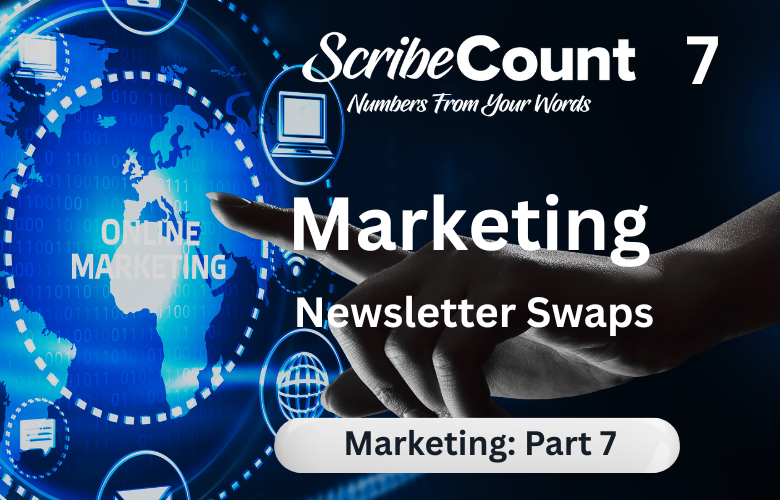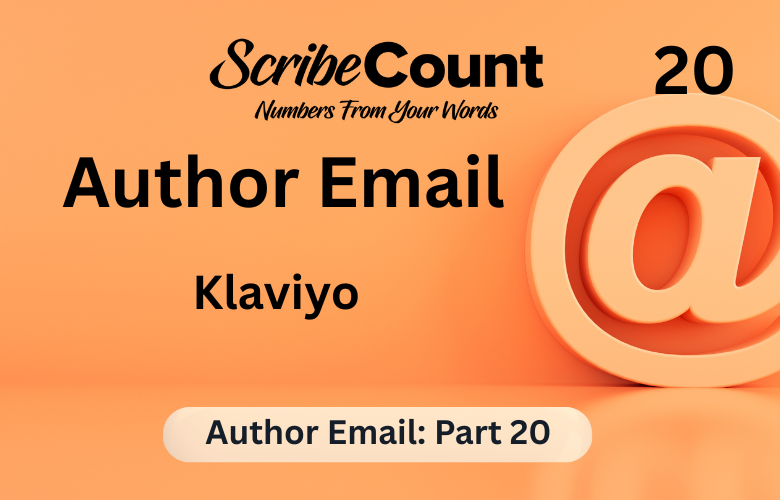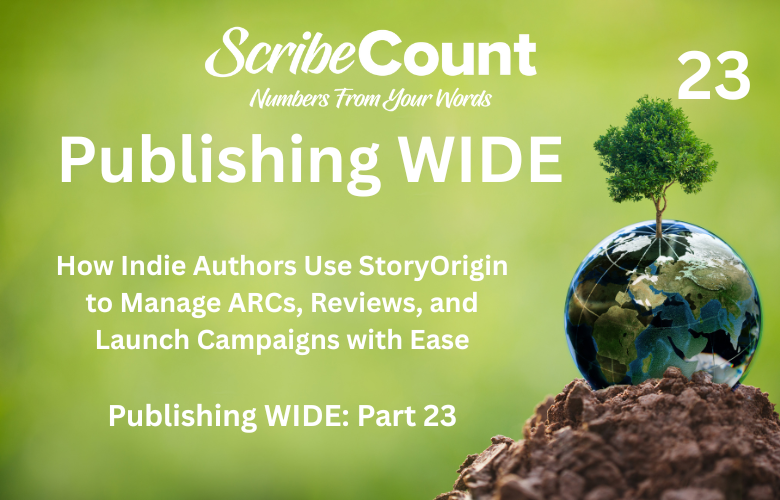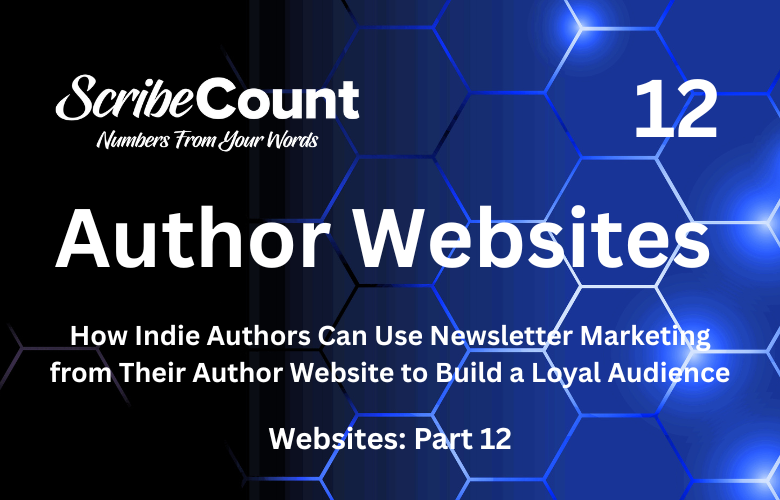Newsletter Swaps for Indie Authors
In the world of indie publishing, visibility is a currency. While paid ads and newsletter promotions can buy exposure, there’s another method that’s both organic and incredibly effective—newsletter swaps. Built on collaboration and shared audiences, newsletter swaps allow indie authors to promote each other’s books to their respective email lists, leveraging trust and engagement to boost reach without spending a dime.
For indie authors with growing platforms, newsletter swaps offer a way to build community, support others in their genre, and increase downloads, sales, or sign-ups with minimal cost. They can be used to launch a new release, drive traffic to a reader magnet, revive a backlist title, or introduce your audience to a fellow author’s work. Done right, a swap can yield as much—or more—than a paid ad campaign.
Services like BookFunnel and StoryOrigin have streamlined this process, providing structured systems for organizing, tracking, and executing newsletter swaps. These platforms allow authors to manage their campaigns efficiently while maintaining control over content and timing.
This article explores how newsletter swaps work, how to conduct them using BookFunnel and StoryOrigin, and how authors across ebook, print, and audio formats are using swaps in tandem with paid promotions to build sustainable, scalable book businesses. From setup to execution, we’ll cover every element of a successful swap campaign and highlight how it fits into the broader ecosystem of modern author marketing.
What Are Newsletter Swaps?
A newsletter swap is a mutual promotional arrangement between two or more authors. Each author agrees to mention the other’s book or reader magnet in their email newsletter, typically in exchange for a similar mention in return. This strategy is grounded in reciprocity and trust—each author introduces their readers to books they believe are relevant, well-crafted, and worth exploring.
Unlike paid promotions, swaps are built on existing relationships and community goodwill. They tend to perform better when audiences are aligned—meaning both authors write in similar genres or target similar reader demographics. The result is a win-win: both authors gain exposure, potential downloads, and new fans, without having to purchase ad space or submit to editorial gatekeepers.
Swaps can promote a wide range of assets, including free ebooks, discounted titles, audiobook samplers, or even physical books available through an author’s direct store. Some swaps are geared toward list-building, driving readers to sign up for a free book; others are designed to increase sales, especially when coordinated around a price drop or launch.
Successful swaps are planned in advance, executed professionally, and tracked for performance. Tools like BookFunnel and StoryOrigin offer the infrastructure to manage these details at scale—especially for authors with multiple books, mailing lists, or genres in play.
BookFunnel: Swaps Built on Reader Delivery and Trust
BookFunnel began as a secure ebook delivery platform, allowing authors to send ARCs and reader magnets to subscribers with minimal tech hassle. Over time, it has evolved into one of the most widely used marketing tools in the indie publishing space, and one of its most powerful features is its group promo and swap coordination system.
BookFunnel’s newsletter swap function lets authors browse other participating authors who are looking to feature similar books. Swaps can be one-to-one (you promote me, I promote you) or part of a multi-author group promo, where multiple books are showcased on a shared landing page. Each author then promotes the page to their audience on an agreed date.
To participate in swaps through BookFunnel, authors must have an active BookFunnel account, a book or reader magnet uploaded to the system, and a connected email list. Swaps are typically arranged around shared genre categories—such as space opera, cozy mystery, or spicy contemporary romance—and filtered by audience size and promotional intent.
The process is simple. You browse the list of available swaps or create your own promo page, set the promotion date, and specify what kind of swap you’re looking for—free download, full price, discounted title, or audio sample. Once a match is found, you confirm the details, prepare the promotional content, and schedule your newsletter send.
BookFunnel tracks the number of clicks and downloads each book receives, offering detailed analytics so you can assess the effectiveness of each swap. It also manages file delivery, email opt-in confirmation (for list-building promos), and even direct integration with mailing platforms like MailerLite and ConvertKit.
Authors who use BookFunnel effectively tend to keep organized swap calendars, vet each promo for brand alignment, and pair their swaps with larger promotions like Kindle Countdown Deals or paid newsletter features from Written Word Media.
StoryOrigin: End-to-End Campaign Management
StoryOrigin offers a more expansive approach to newsletter swaps by acting as an all-in-one marketing coordination tool for indie authors. In addition to facilitating swaps, it also manages universal book links, review copies, goal tracking, and income reporting.
The heart of StoryOrigin’s system is its newsletter swap dashboard, where authors can post available books for promotion and request swaps with other authors. Swaps are scheduled around specific send dates and promotional assets are uploaded directly into the platform. Once approved, both parties confirm and log the details.
One of StoryOrigin’s standout features is its professionalism and accountability. Every author’s track record is visible—if someone fails to promote a book they agreed to include, it’s reflected in their profile. This transparency has created a high-trust environment and made StoryOrigin particularly popular among authors seeking serious, consistent marketing partners.
The platform supports multiple formats, including ebook and audiobook swaps. It also allows authors to run automated reader magnet campaigns, where downloads are gated behind email signup forms integrated with platforms like Klaviyo, Mailchimp, or ActiveCampaign.
StoryOrigin’s analytics dashboard lets you track every element of your swap campaign—clicks, conversions, and subscriber acquisition—so you can measure your list growth and sales impact over time. For authors running launch campaigns or monthly backlist pushes, this level of data is essential.
StoryOrigin is free to try, with premium features unlocked via subscription. The investment is modest and well worth it for authors who want structured, scalable newsletter outreach that’s grounded in data, integrity, and community.
How Newsletter Swaps Work: Step-by-Step Execution
Planning and executing a newsletter swap is straightforward, but success depends on preparation, alignment, and communication. Whether you use BookFunnel, StoryOrigin, or a manual email exchange, the process follows the same general pattern.
First, define your goal. Are you looking to grow your email list by offering a free reader magnet? Are you promoting a $0.99 sale on a series starter? Do you have an audiobook sample you want listeners to try? Each goal informs how you set up your swap.
Next, identify potential swap partners. Ideally, these authors write in your genre, have similar audience sizes, and maintain a consistent email cadence. On BookFunnel and StoryOrigin, you can search by genre, audience size, and promotion date. Once you find a partner, initiate a swap request and provide your promotional assets—cover, blurb, book link, and any tracking data you want included.
Once approved, prepare your email content. Most authors include swaps as part of a curated newsletter—something like “Books My Readers Might Love” or “This Week’s Favorite Finds.” You don’t need to feature the swap book in the headline or make it the main event—just a short blurb and image with a link can be enough to drive results.
Send your email on the agreed date and follow up with your swap partner to confirm completion. Use the tracking tools provided by your platform to measure clicks and performance. If the results are positive, consider working with that author again—or invite them into a multi-author group promo next time.
Authors who master swaps often build a small circle of trusted partners and coordinate regular promos. They use shared genre pages, create bundled deals, or even run genre-specific promotions across direct stores like Payhip or Shopify, combining newsletter swaps with direct sales initiatives.
Swaps Across Ebook, Print, and Audiobook Formats
Newsletter swaps began with ebooks—and they still work best in digital formats where free or discounted downloads are easy to deliver. But swaps can also support print and audiobook sales when used creatively.
For audiobooks, authors often create sampler landing pages using BookFunnel or StoryOrigin, offering a free chapter or first act in exchange for an email signup. These are promoted via newsletter swaps, and engaged listeners are then directed to buy the full audiobook on platforms like Spotify, Chirp, or the author’s direct storefront.
Print books are less frequently swapped because of the higher cost to deliver, but swaps can still drive awareness. For example, an author might swap to promote a limited signed edition or holiday bundle sold via their website. If your audience loves collectibles or special editions, these swaps can lead to high-value purchases—even if the volume is lower.
The key to multi-format swaps is clarity. Let readers know what to expect—whether it’s a digital download, audio sample, or signed hardcover. Keep landing pages simple, device-friendly, and focused on conversion. Use universal book links from Books2Read to ensure your books are accessible on every major platform.
Pros and Cons of Newsletter Swaps
Newsletter swaps offer clear advantages for indie authors: they’re free to execute, easy to coordinate, and build lasting relationships within the author community. When done well, swaps can grow your audience, boost sales, and extend the life of every promotion you run.
Swaps are also flexible. You can run them once a week, once a month, or as part of a multi-author campaign. You can use them to build a brand new list, revive a dormant backlist, or push preorders for a new release.
The downsides? Swaps require trust. Not every author will follow through, and results can vary depending on the quality and engagement level of the other author’s list. Swaps also take time to coordinate—and if your email list is small or inactive, it may be hard to find partners willing to exchange promotions.
That’s why professionalism matters. Treat each swap like a professional agreement, even if no money changes hands. Deliver what you promise, maintain communication, and choose your partners carefully. Over time, your swap circle will become one of your most valuable marketing resources.
Combining Newsletter Swaps with Paid Promotions
The most effective strategy is to combine newsletter swaps with paid newsletter promos and launch campaigns. For example, you might run a Freebooksy or Bargain Booksy promo on Tuesday, send your own newsletter on Wednesday featuring several swaps, and then add a Robin Reads push on Thursday to keep momentum going.
Some authors stack newsletter swaps in the weeks leading up to a launch, using them to build interest and grow their list. Others use swaps to support a Kindle Countdown Deal or BookBub Ad push, creating multiple traffic sources that all reinforce the same call to action.
You can also use swaps to promote reader magnets and get readers into your onboarding flow—where automation and email sequences take over. This is where tools like Klaviyo, MailerLite, and ConvertKit shine. They help you convert a swap click into a long-term subscriber who buys every book you release.
Swaps are not a silver bullet. But in combination with paid advertising, organic content, and strong email marketing practices, they become a multiplier—amplifying your reach while keeping your marketing budget lean and focused.
Final Thoughts: Build Relationships, Not Just Reach
Newsletter swaps are more than a marketing tactic—they’re a relationship strategy. They connect you with fellow authors, introduce you to new readers, and allow you to scale your marketing in a sustainable, community-driven way.
In an era where attention is fragmented and algorithms are unpredictable, peer-to-peer collaboration remains one of the most stable paths to long-term growth. Newsletter swaps allow indie authors to support one another while building businesses that are both profitable and reader-focused.
With tools like BookFunnel and StoryOrigin at your side, you can coordinate professional, high-impact promotions that reach new readers every time you hit “send.”




